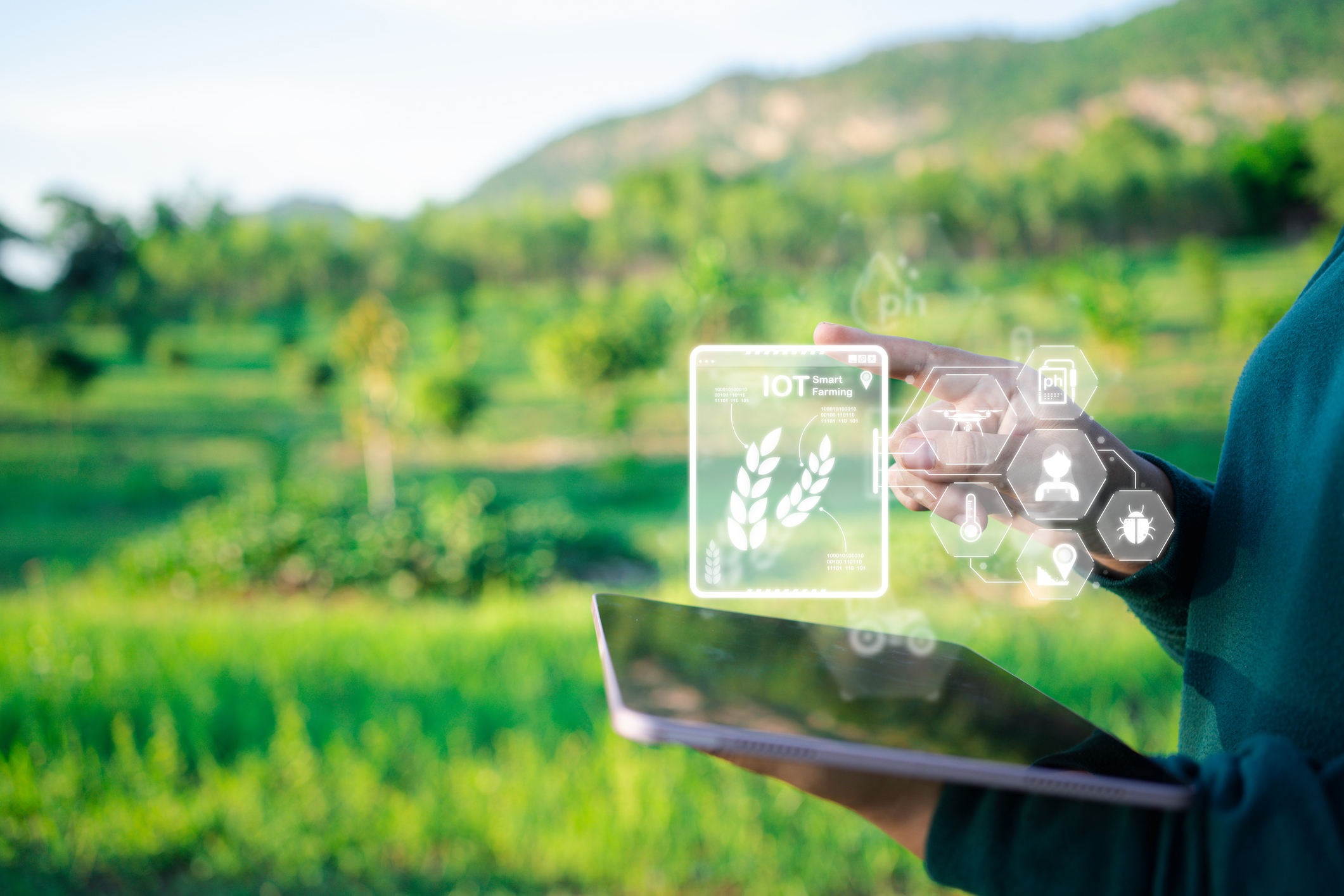Africa’s agricultural landscape, often vulnerable to the harsh elements and varied weather patterns, is seemingly evolving into a hub of innovation that reaches far beyond its traditional roots.
It was not long ago that farmers on the continent had to rely on birds like the Red-billed Quelea and African Cuckoo for rain predictions. Now, various types of technology are taking their place, equipping agricultural stakeholders with the tools they need to weather the proverbial storms.
For example, thousands of people in West Africa, in particular, are able to receive hyperlocal weather forecasts, via SMS, from sources like Ignitia, to combat the changing climate.
“Extreme weather is becoming more frequent and intense across Africa, and unfortunately, conventional forecasting weather models—optimized for temperate regions like Europe—struggle to capture heat-driven rainfall dynamics and extremes such as heavy thunderstorms,” explains Andrew Lala, CEO at Ignitia, a company specializing in weather and climate intelligence across Africa, Latin-America and South-East Asia.
“You need to get rainfall forecasting correct at different time horizons, if you’re going to help farmers understand how good or bad the upcoming rainy season will be and how to mitigate any in-season rainfall challenges like a delayed rainy season onset or erratic dry spells.”
Loading...
Staying alert to problematic weather patterns has profound ramifications.
The floods in Senegal towards the end of 2024 were severe, reportedly submerging 16,000 hectares of crops, including rice, corn, and okra. A report from the Senegal River Delta, stated, at the time, that around 250,000 people were left facing food insecurity.
Meanwhile, the United Nations Children’s Fund’s (UNICEF) Humanitarian Situation Report from October 2024 indicated that a drought in Zambia has caused food shortages for around 4.95 million people.
The need enrich farmers with information to adapt—while minimizing the risk of yield collapse—and to identify optimal conditions for planting and harvesting is crucial.
“By equipping farmers with six-month rainy season insights, you can help them identify planting windows, and identify drought or flood conditions and pest pressures early so that they can build resilience either through planting shorter cycle crops, investing in drought tolerant seed, or connecting them with crop insurance products in the case of extremes,” Lala tells FORBES AFRICA.
Africa has a history of food insecurity. According to Professor David Luke in How Africa Eats: Trade, Food Security, and Climate Risks, over 340 million people are suffering from this.
UNICEF also reports that one in three children in Africa, under the age of five, lives in food poverty.
This challenge has plagued the continent, with climate change, a lack of resources, and conflict as the main protagonists, highlighting the need for modern tools and predictive technology to counteract potential calamities.
South African-based Aerobotics combines thermal-imagery drones and satellites with artificial intelligence (AI) to identify areas of underperformance caused by irrigation issues, nutrient
deficiencies, pests, and diseases. This provides farms with precision data focused on economically maximizing yield.
Producers can target specific areas of concern through per-plant analyses, resulting in more efficient use of fertilizers and pesticides, while optimizing irrigation, and enabling strategic labor deployment.
“Thermal-imagery drones and satellite analytics are reshaping the future of farming across Africa. By turning invisible stress into actionable data, this technology allows farmers to detect issues like water stress, disease, and nutrient deficiencies earlier than ever before,” says Aerobotics Chief Commercial Officer, Vic van den Berg.
Also among the latest in agritech is smart sensors. Able to measure soil moisture, temperature and pH levels, farmers need no longer play the guessing game as they are supported by real-time data to make informed decisions.
For agricultural stakeholders, knowledge is priceless—spotting disease, optimizing growing conditions, and preparing for harsh weather could even mean the difference between widespread food shortages and national stability.
However, a challenge to the use of tech in Africa is digital literacy and limited access to power and smartphones in rural regions, which can then hinder the potential of smart farming, particularly at the smallholder level.
Without the necessary education and infrastructure, farmers may struggle to adopt modern techniques aimed at boosting productivity and resilience. This digital divide leaves rural communities more vulnerable than ever.
“Millions of farmers can benefit from technology,” notes Lala.
While the revolutionary capabilities of smart farming won’t materialize overnight, the growing trend of equipping farms of all sizes with yield-boosting technologies signifies a noteworthy shift in agricultural practice across Africa.
The seed has been planted; now is the time to support its growth.
Loading...
